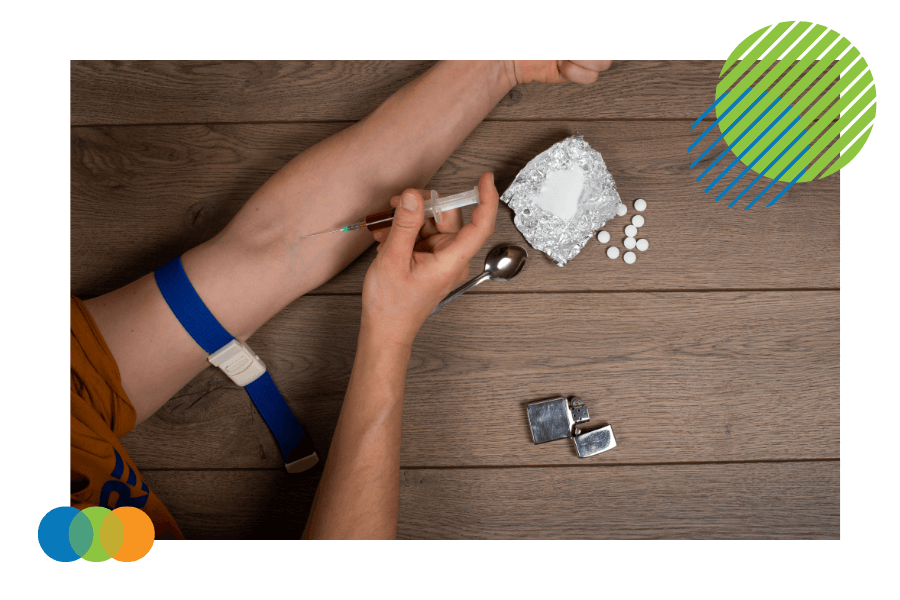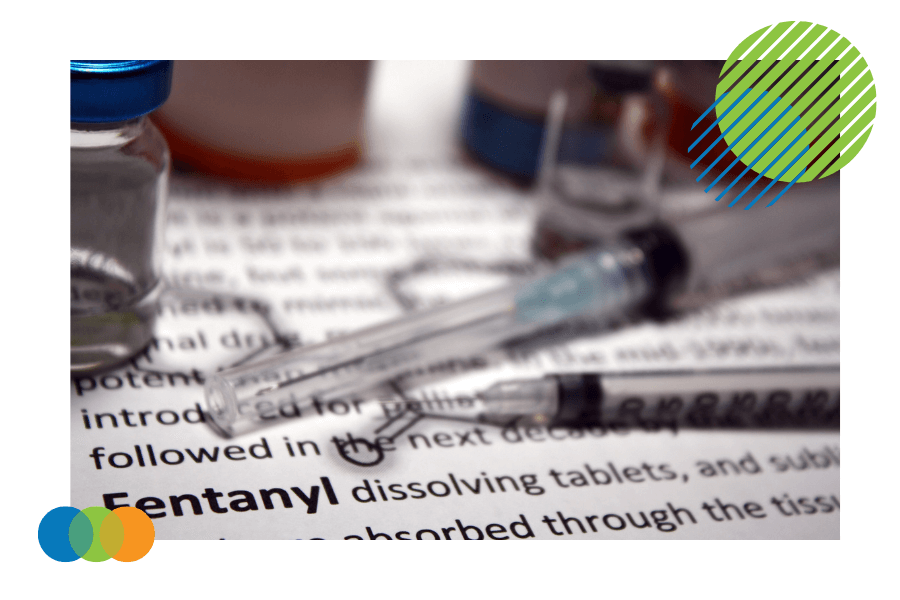 |
Written by Liz McDermott |

Opioid misuse, addiction, and overdose deaths have become an international epidemic. Here are a few recent headlines:
“Over 100,000 Americans died from drug overdoses in 2022, CDC says.”
“Toronto police issue public safety alert over downtown opioid overdoses.”
“Drug overdose deaths have quadrupled among older US adults.”
“‘Bad batch’ of street drugs pushes opioid overdoses to record level in Calgary.”
Why is this happening? How is it affecting workplaces? Before getting into the wherefores and the whys...
Let’s talk about opioids.
Types of Opioids
Opioids are a class of drugs mainly used to control pain. There are three types of opioids:
- Natural opioids (also called opiates), which are derived from the opium poppy plant, such as morphine and codeine
- Semi-synthetic opioids, such as the prescription drugs hydrocodone and oxycodone, and the illegal drug heroin
- Synthetic opioids, such as the prescription drugs methadone, tramadol, and fentanyl
Medical Uses of Opioids
Doctors may prescribe opioid drugs as pain relievers for acute (short-term) moderate to severe pain, such as pain after surgery and chronic (long-term) pain. Opioids may also be prescribed to treat moderate to severe diarrhea or bad coughs.
Most opioids bind to specific receptors in the body called opioid receptors. These opioid receptors block pain signals and are primarily found in the brain, spinal cord, and gastrointestinal tract and regulate pain, pleasure, and other functions.
What drugs are opioids?
- Morphine - Often used to manage severe pain, such as that experienced after surgery or in cancer patients
- Codeine - Frequently prescribed for mild to moderate pain and also used as a cough suppressant
- Oxycodone - A powerful pain reliever for moderate to severe pain management. It is found in opioid medications such as OxyContin and Percocet.
- Fentanyl - A powerful synthetic opioid many times stronger than morphine, its medicinal use is primarily to relieve severe pain in end-stage cancer patients
What are some possible health effects of prescription opioids on the brain and body?
On the plus side, when used as prescribed, opioids can significantly reduce or eliminate pain. On the minus side, they have properties that can lead to misuse, dependence, and addiction:
- Euphoric Effect – Even at medically prescribed levels, opioids can induce a profound sense of pleasure, often described as a wave of euphoria or bliss. Individuals may experience a deep understanding of contentment and a positive emotional state. The intense pleasure experienced during opioid use can lead to compulsive drug-seeking behavior.
- Develop Tolerance – When a person uses a drug consistently and repeatedly, the body adjusts to its presence. This adjustment involves adaptations in the brain and other tissues, leading to changes in how the drug is processed and its effects on the body. Over time, these adaptations can result in a diminished response to the drug, requiring higher doses to achieve the desired effect or the original level of response.
- Neurochemical Changes - Opioids affect the brain's neurochemistry by altering the balance of neurotransmitters, including dopamine, serotonin, and norepinephrine. These changes can disrupt normal brain functioning and contribute to the development of addiction.

Prescription Opioids Dependence vs. Addiction
When a person uses an opioid to manage pain associated with a medical condition for weeks or months, they can develop a physical dependence on the drug. This means the body requires a specific drug dose to prevent withdrawal symptoms. Physical addiction affects the part of the brain that oversees autonomic body functions, such as breathing, but the reward center in the brain is not affected. A person can be physically dependent on opioids without unhealthy use. For example, a patient with chronic back pain from an injury may be physically dependent on opioids but not addicted.
When someone develops physical dependence, they risk developing an Opioid Use Disorder (OUD). Some people develop an opioid use disorder after taking a prescription opioid for a few days. On the other hand, some people can take opioids for extended periods without ever developing an OUD. Though the causes of OUD are not fully understood, contributing factors may include how opioids affect an individual’s brain, family history, and environmental and lifestyle factors. The risk is significant. Rates of OUD among individuals with opioid dependence have been reported to range from 26% to 36% in various studies.
What are the long-term effects of using opioid drugs?
In addition to addiction and tolerance, long-term use can have physical consequences. Opioid drugs can cause respiratory depression, which can be life-threatening in high doses. They can also cause constipation, nausea, and vomiting, which can be uncomfortable and affect the quality of life.
Long-term use can also increase the risk of developing chronic pain conditions and other health problems. Finally, long-term use can have social consequences. It can lead to strained relationships with family and friends, loss of employment or income, and legal problems related to drug use or possession.
Can a person overdose on prescription opioids?
Overdose on prescription opioids can occur when someone takes too much of the drug or combines it with other substances like alcohol or benzodiazepines. Symptoms of an opioid overdose include shallow breathing, extreme drowsiness, pinpoint pupils, and loss of consciousness. It is crucial to seek emergency medical attention immediately if you suspect someone has overdosed on prescription opioids.
What type of treatment can people get for addiction to prescription opioids?
Prescription opioid misuse is a severe public health concern, and effective treatment options are available to help individuals overcome addiction. Medication-assisted treatment (MAT) is a common approach that combines medications with behavioral therapy. MAT can help to reduce withdrawal symptoms and cravings and improve overall health outcomes.
MAT's most commonly used medications are methadone, buprenorphine, and naltrexone. Counseling and behavioral therapy are other essential components of treatment for misuse. These therapies can help individuals address the underlying causes of their addiction, develop coping skills, and learn healthy behaviors to support recovery. Individuals with opioid misuse need professional help, as treatment can significantly improve their chances of long-term recovery and quality of life.

Why the increase in the misuse of opioid drugs?
Opioids – and particularly opiates (natural opioids) – have been around for centuries. Morphine has been available since the early 1800s. Other extracts from the opium poppy plant have been used for pain relief for millennia. The first mention of their use is thought to be in a Sumerian clay tablet from about 2100 BC. So why is it such a problem now?
Opioid pain medications were promoted in the 1990s as safe and effective solutions for pain management and were, therefore, widely prescribed. The increased availability of prescription opioids resulted in a larger supply of these drugs in communities. Many individuals prescribed opioids for legitimate medical reasons developed a substance use disorder. Unused prescription opioids also became accessible to others, including family members and friends, leading to unintended misuse.
When prescription opioids became harder to obtain due to increased regulation and awareness of their addictive potential, some individuals turned to illegal drugs, such as heroin. Heroin is often cheaper and more readily available than prescription opioids. Additionally, the emergence of potent synthetic opioids, such as fentanyl, has contributed to the problem. Fentanyl is estimated to be 50 to 100 times more powerful than morphine and is often mixed with other street drugs. This has caused a spike in overdoses and overdose deaths.
Socioeconomic challenges, such as unemployment, poverty, and lack of access to healthcare, have played a role in the opioid addiction problem. Financial difficulties and stressors can contribute to mental health disorders, increasing the risk of misuse as individuals seek relief from their symptoms.
Is opioid misuse for chronic pain a problem in workplaces?
Yes, especially in construction, manufacturing, transportation, and healthcare industries. Heavy physical work, excessive repetition of tasks, awkward postures, and heavy lifting are known workplace risk factors for musculoskeletal pain and injuries. Workers with chronic pain from ergonomic factors and acute pain from injuries are often prescribed opioids or get them without a prescription to relieve pain.
As a heavy equipment operator from Alberta said, “With the trades, there's a lot of hard work and physical work where you're sore and tired and in pain, and you have to be able to get up and go to work the next day and do it all over again." A study in Utah found that 57% of opioid-related overdose deaths occurred after a work injury, with 13% of overdose deaths preceded by a work injury within the past three years of death.
The use of opioids – even prescribed medical use – has short-term side effects such as drowsiness, euphoria, dizziness, and confusion. This is particularly concerning for a worker in a safety-sensitive position who may become impaired, preventing them from doing their job safely.
What are the warning signs of opioid misuse at work?
Opioid misuse is a growing concern in the workplace, as it can lead to decreased productivity, increased absenteeism, and even workplace accidents. Employers should be aware of several warning signs of misuse at work. One of the most obvious signs is a decrease in job performance, such as missed deadlines or poor quality of work. Employees may also exhibit changes in mood or behavior, including irritability, apathy, or aggression. Other signs may include frequent absences, tardiness, and unexplained disappearances during work hours. Employers must address these warning signs promptly and provide support and resources for employees struggling with misuse.
What can employers do about prescription painkillers like opioid drugs?
Employers can and should develop and implement the following:
- A musculoskeletal injury prevention program to address ergonomic factors that contribute to work-related injuries and associated pain and promote employees' musculoskeletal health. This involves assessing workstations, equipment, and tools and evaluating job tasks and workflows that involve repetitive motions, forceful exertions, awkward postures, and prolonged static positions.
- An impairment policy that provides clear guidelines and procedures for identifying, managing, and mitigating impairment risks within the workplace. Elements of the program include opioid use and misuse training for workers, a definition of impairment, prohibited substances and behaviors, reporting mechanisms, any provisions for drug testing, disciplinary measures, and accommodation and support for workers with substance use disorders.
What can you do if you witness an opioid overdose?
Opioids are a respiratory depressant, meaning that an overdose can cause a person to breathe too slowly or stop breathing altogether. Other indications they may have overdosed are loss of consciousness, blue lips and fingernails, and lack of responsiveness when you shout or shake them. If you find someone in this state, call 911 and stay with the person until emergency medical personnel arrive.
How can an opioid overdose be treated?
If it’s available, give the person naloxone while you’re waiting. Naloxone (trade names NARCAN and KLOXXADO) quickly reverses an overdose by blocking the effects of opioids. It can restore normal breathing within 2 to 3 minutes in a person whose breath has slowed, or even stopped, due to overdose. Naloxone won’t harm someone if they’re overdosing on drugs other than opioids, so it’s always best to use it if you think someone is overdosing. Naloxone is available without a prescription in the U.S. and Canada. In some jurisdictions, workplaces in high-risk industries must have naloxone available on-site.
Support Treatment of Those with Opioid Use Disorder
Treatment programs are available if you or someone you know has an OUD. They typically involve a combination of Medication-Assisted Treatment (MAT) using opioid antagonists such as methadone (a type of medication that blocks the effects of opioids in the body) and psychosocial interventions such as cognitive-behavioral therapy (CBT), group therapy, or support groups. Most Employee Assistance Programs (EAPs) provide access to these programs.
Conclusion: Can the use of prescription opioids lead to addiction?
Prescription opioids have become increasingly accessible, leading to a surge in opioid misuse. It is important to note that prescription opioids can be as dangerous as illegal street drugs when misused. Four out of five heroin users started by misusing prescription pain medications. Commonly prescribed pain medications include Percocet, OxyContin, and Vicodin.
Misuse can lead to addiction and possible overdose, with older adults at higher risk of accidental misuse or abuse due to multiple prescriptions and chronic diseases. Seeking treatment for opioid addiction during pregnancy can lead to better outcomes for both the mother and baby. Methadone and buprenorphine are commonly used to treat opioid-dependent pregnant women. Opioid use and misuse training educates employees on the dangers of misuse, and providing them with resources for appropriate treatment options is important.
In conclusion, the long-term effects of opioid drugs can be devastating for individuals and their families. Addiction, tolerance, physical side effects, and social consequences are potential risks associated with long-term use. It is essential to seek help if you or someone you know is struggling with addiction or dependence to prevent further harm.
For more information, please contact us to inquire about our safety training programs.

